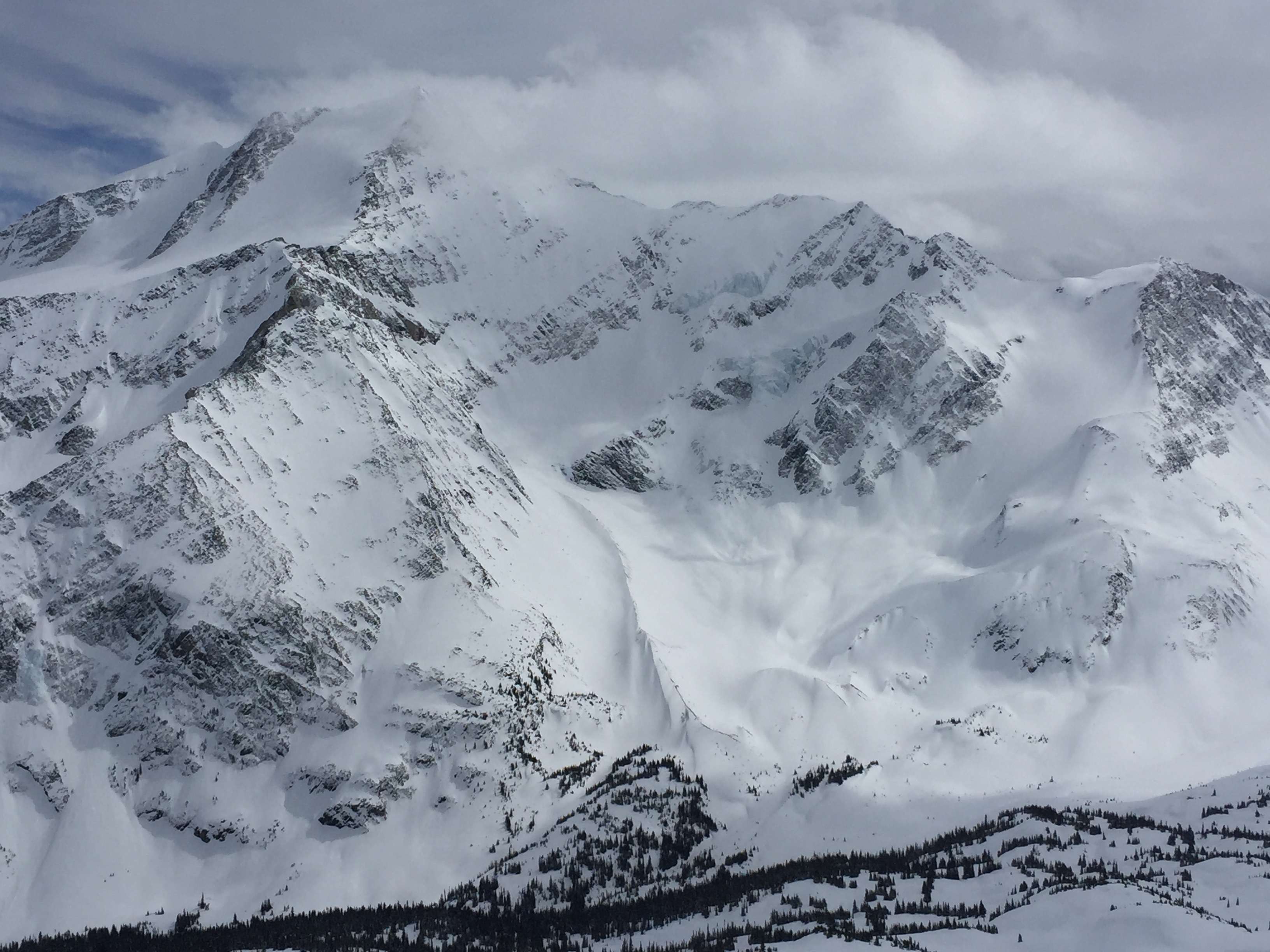Conditions Report Northern Selkirk Range - Benedict Creek
North Fork Benedict Creek - Northern Selkirk Range
The Canadian Mountain and Ski Guide program - Apprentice Ski Guide Exam was held between April 3rd and 8th in the north fork of Benedict Creek in the northern Selkirk Range.
Location:
We camped at an elevation 1980m and traveled up to an elevation of 2700m on aspects ranging from north, east and south.
Weather:
One day of arctic high pressure followed by unsettled weather producing up to 40cm of storm snow with moderate to strong southerly winds. Periods of intense precipitation, cloud cover, as well as intermittent intense solar radiation ended off our trip and made for difficult travel in above tree-line terrain due to poor visibility.
Temperatures ranged between lows of -17 at the start of the week to daytime highs of 2 degrees at 2200m towards the end of our trip.
Snowpack Observations:
30-40cm of recent storm snow overlies the April 4th interface which consists of surface hoar, facets, and sun-crust (solar aspects.) Generally moderate and hard resistant planar shear results observed in top 80cm. A series of melt-freeze crusts are present in the upper snowpack at tree line. A well settled mid pack of increasing density is present in the alpine elevations with snow depths exceeding 300cm in most alpine locations. Good coverage on all glaciers observed. Large cornice growth observed on alpine lee features.
Avalanche Observations:
Isolated loose wet/dry surface activity up to Sz 2 observed during periods of intense solar radiation and precipitation in steep terrain. We had concern about wind-slab formation at tree-line and alpine elevations due to the presence of precipitation and mod to strong winds however we found there to be little in the way of concern as the bond to the interface seemed strong in the terrain we had visited towards the end of our trip.
One notable size 3.5 avalanche was observed from distance on the north face of Mt. Carson in Glacier National Park. It was a deep release located on a big lee face of the alpine at an elevation of approximately 2700m, with either the basal or mid winter facet weaknesses as the failure plane.
Terrain Use:
We found excellent ski quality on dry snow above 2300m on polar aspects. Fair skiing was found on moist snow at TL on most aspects in the afternoons. Skied mostly supported terrain up to 40 degrees in steepness and avoided terrain below 2000m due to perceived poor ski quality.
Our avalanche hazard assessment had us avoiding large alpine and tree-line convexities, shallow snowpack areas and steep overhead slopes with exposure to cornices.
Outlook:
If and when the sun decides to usher in true spring weather there will surely be excellent ski conditions for the popular spring trips in the alpine.
Large cornices as well as deep instabilities in the snowpack seem to still have the potential to produce large avalanches of which the timing is difficult to forecast. Limiting exposure to terrain features that contain these characteristics seem prudent given all of the large events still being reported in the western Canadian mountain ranges.
Enjoy the spring everyone.
Darek Glowacki
ACMG Mountain Guide on behalf of the Apprentice Ski Guide Candidates in Benedict Creek.

